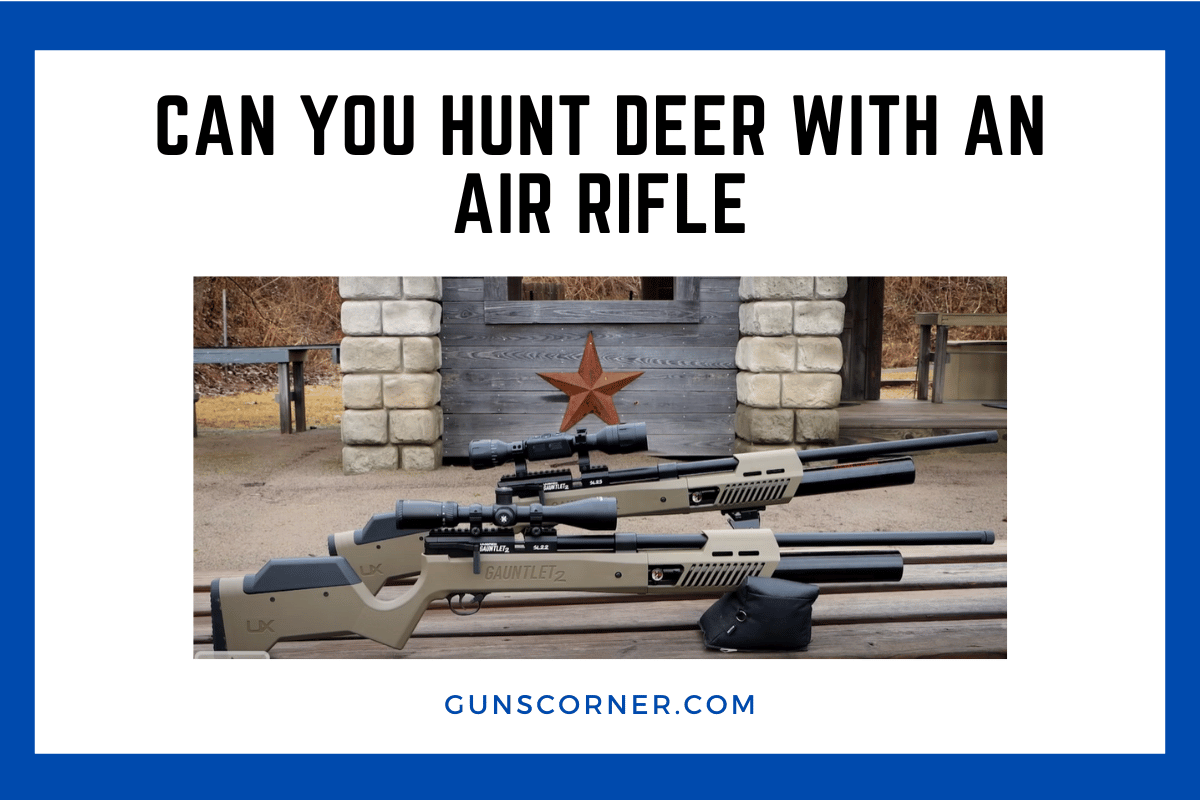Hunting deer with an air rifle has gained popularity in recent years. As technology improves, air rifles have become more powerful and accurate.
Air rifles can be used to hunt deer in some states, but specific regulations and requirements must be followed.
Air rifle hunting laws vary by state. Some states allow the use of air rifles for deer hunting, while others prohibit it. For states that permit it, there are often restrictions on caliber size and muzzle energy.
It’s crucial to check local regulations before planning an air rifle deer hunt.
When hunting deer with an air rifle, choosing the right equipment is essential. Big bore air rifles in .35 caliber or larger are typically recommended for deer hunting. These rifles can deliver the necessary power and accuracy for ethical harvests.
Proper shot placement and range limitations are also important factors to consider.
Key Takeaways
- Air rifles can be used for deer hunting in some states with specific regulations
- Big bore air rifles of .35 caliber or larger are recommended for deer hunting
- Proper equipment, shot placement, and adherence to ethical hunting practices are crucial
Legality of Hunting Deer with Air Rifles
The rules for hunting deer with air rifles vary by state. Some states allow it, while others don’t. It’s crucial to check local laws before planning a hunt.
States that permit deer hunting with air rifles often have specific requirements. These may include minimum caliber sizes and muzzle energy levels.
For example, some areas require air rifles to be at least .35 caliber for deer hunting. Others may demand .45 or .50 caliber guns.
Muzzle energy is another key factor. Many states set a minimum energy level, often around 400 foot-pounds. This ensures the air rifle has enough power to humanely take down a deer.
Idaho’s rules show how specific these laws can be:
- For deer: .35 caliber minimum
- For elk: .45 caliber minimum
Hunters must stay up-to-date with regulations. Laws can change, and it’s the hunter’s duty to know current rules.
Always check with the local wildlife department before hunting. They provide the most accurate and current information on air rifle deer hunting laws.
Choosing the Right Air Rifle for Deer Hunting
Picking the best air rifle for deer hunting involves looking at caliber size and power output. These factors ensure an ethical and effective hunt.
Air Rifle Caliber Requirements
For deer hunting, bigger calibers are better. Most states require at least .35 caliber for deer. Some popular options include:
- .357 caliber
- .45 caliber
- .50 caliber
The Seneca Dragon Claw and AirForce Texan are good choices in these larger sizes. Bigger bullets create wider wound channels, leading to quicker, more humane kills.
Always check local laws before hunting. Some areas have specific rules about air rifle use for deer.
Air Rifle Power and Performance Considerations
Power matters as much as caliber for deer hunting. Look for rifles that deliver at least 350 foot-pounds of energy at the muzzle. This ensures enough force to penetrate and take down a deer ethically.
Key performance factors:
- Muzzle velocity
- Accuracy at 50-100 yards
- Shot capacity
- Noise level
Pre-charged pneumatic (PCP) rifles often work best for deer. They offer consistent power and multiple shots. The Hatsan PileDriver and Umarex Hammer are strong options in this category.
Practice is crucial. An air rifle’s limited range means shots must be precise.
Essential Techniques for Hunting Deer with Air Rifles
Air rifle deer hunting requires specialized skills and techniques. Proper range management, stealth, and shot placement are crucial for ethical and effective hunts.
Effective Range and Accuracy
Air rifles have a limited effective range for deer hunting. Most hunters stay within 50-75 yards of their target. Practice is key to building accuracy at these distances.
Use a rangefinder to judge distances accurately. Knowing your exact range helps compensate for pellet drop.
Wind affects air rifle pellets significantly. Learn to read wind direction and speed. Adjust your aim accordingly on windy days.
Shoot from a stable position whenever possible. Use a bipod, shooting stick, or natural rest like a tree or rock. This improves accuracy at longer ranges.
Stalking and Ambush Strategies
Stealth is critical when hunting deer with air rifles. Move slowly and quietly through the woods. Stop often to scan and listen for deer.
Wear camouflage that matches your surroundings. Break up your human outline with leafy suits or ghillie suits.
Set up ground blinds or tree stands near deer trails or feeding areas. Air rifles work well from concealed positions. This allows you to get closer to deer undetected.
Use deer calls and scent lures to bring deer within range. Grunt calls and doe bleats can be effective during the rut.
Pay attention to wind direction. Always approach from downwind of where you expect deer to be.
Shot Placement Fundamentals
Proper shot placement is crucial with air rifles. Aim for the vital organs – heart and lungs. This area is located right behind the deer’s front shoulder.
Wait for a broadside or slightly quartering-away shot. This gives the best angle to hit the vitals.
Avoid shooting if the deer is alert or moving. Wait for it to relax and present a calm, stationary target.
Use enough power for a clean kill. Air rifles for deer hunting should produce at least 40-50 foot-pounds of energy.
Take only shots you’re confident you can make. It’s better to pass on a marginal opportunity than to wound an animal.
Ethical Considerations in Air Rifle Deer Hunting
When hunting deer with an air rifle, ethical practices are crucial. Hunters must prioritize making quick, clean kills to minimize animal suffering.
Choosing the right caliber and power is essential. Air rifles should be at least .35 caliber. They should also have sufficient muzzle energy to humanely take down a deer.
Shot placement is critical. Hunters need to aim for vital areas like the heart and lungs. This requires skill and patience to wait for the perfect shot opportunity.
Limiting shot distance is also important. Air rifles are most effective at closer ranges, typically under 100 yards. Taking longer shots increases the risk of wounding an animal.
Proper training and practice are necessary. Hunters should be proficient with their air rifle before attempting to hunt deer.
Tracking and recovery skills are vital. If a deer is wounded, the hunter has an ethical obligation to track and dispatch it quickly.
Respecting local laws and regulations is non-negotiable. Hunters must ensure air rifle deer hunting is legal in their area and follow all applicable rules.
Using appropriate ammunition designed for big game hunting helps ensure ethical kills. Standard pellets may not be suitable for deer.

